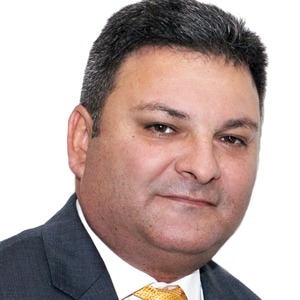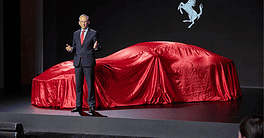Both consumer and B2B customers have embraced digital payments. What does the modernizing landscape mean for banks and their corporate clients?

China is witnessing a mind-boggling number of mobile payments. On a single day—Chinese New Year’s Eve—the WeChat Wallet saw 1.5 billion transactions. The New Year’s Eve period, a 15-day holiday that began on New Year’s Eve and ended on February 11, saw a total of 14.2 billion transactions. The heavy traffic of micropayments using this system raises questions about what types of technologies and platforms could support these volumes if they increase beyond the current closed-loop environment where these virtual wallets currently work.
According to Bryce VanDiver, managing principal at Capco: “Innovation is very fluid right now, with nearly 35% of all fintech investments since 2012 focused on the payments space. This signals that there are additional efficiencies to be gained throughout the entire value chain. However, the optimized customer experience is still the focal point of most innovation. The two most interesting areas of note in the customer-experience area are the movements toward frictionless and faster payments.”
Shirish Wadivkar, managing director and global head of payables and receivables for Standard Chartered, says the two key drivers for payments are the “push” from regulators to enable faster, cheaper, more efficient payments and the “pull” from clients’ evolving business models. “Regulators are supporting faster payments infrastructure, and regulatory acceptance of new technologies is creating a fertile ground for innovation to proceed. On the pull side, we have advancements in client business models that really accelerate the demands from payment networks. A prime example is Uber, which doesn’t have opening or closing hours, no fixed employer base and pricing dependent on variable demand and supply—it’s a 24/7 on-demand business model.”
Normally companies have a fixed employee payroll and most corporate payments are scheduled—they are usually fixed in frequency, and they have to go through rounds of authorizations. “The entire model of fixed-volume payments-system demand is completely disrupted when one considers ‘Uberization,’ because the payments are ad hoc and automated-preauthorized and therefore straight through at the transactional level,” explains Wadivkar. “It is completely machine to machine, driven by apps and APIs [application programming interfaces] exchanging between the conditions of payments and the execution of the payment.”

No one is sure what is going to happen four or five years down the line, however; and Nadish Lad, head of payments product at Volante Technologies, says everyone is speculating and betting on certain things. “Traditionally in the payments-systems software industry, for every dollar spent on software, people have to spend between $6 and $8 implementing it; and a huge portion of that is around overcoming integration issues. We can help reduce that cost and complexity dramatically. Automation is our ethos and in our DNA; and automation technologies with ‘out of the box’ message standards, such as plugins, transformations and APIs, make it easy and fast to change.” Lad added, “Irrespective of what happens in the industry—whether it be distributed ledger, real-time payments or cross-border payments—our customers can adapt themselves to anything quite easily.”
ACCESS ALL AREAS
Volante has always been about automation–focusing on the integration of financial messages and payments with processing systems within financial organizations and corporate connectivity to banks. “Now we have extended that automation into the payment processing and orchestration space–helping with real time payments processing and integration capabilities for PSD2.”
“People want access to payments anytime, anywhere and everywhere, and they want transparency in terms of fees and certainty of delivery and charges,” Lad continues. “In Europe, with PSD2 and other open banking initiatives, where regulators are asking banks to open up account information to payments-service providers (PSPs), we are seeing a lot of value-added services being provided; and that is only going to increase with competition, not just between the PSPs but also within the banks themselves.”
John Karantzis, CEO and managing director of iSignthis, says PSD2 is a big challenge for banks who for the past 25 years have been told by “regulators,

security experts and IT vendors that they need to have layered defenses, firewalls, WAFs [Web application firewalls], out-of-band elements, segregated services and so on.”
“Security elements will clearly now be even more critical,” he continues. “However, building a doorway that bypasses the moat, the drawbridge, the walls and the inner sanctum is tough to get your head around. API security will need to be at the core of API design, development and implementation.”
On the plus side, regulatory initiatives help banks modernize their systems. “Take PSD2, for example: Banks create a system to allow external payment providers to access a particular system within the bank, but they can also make sure that all their internal systems can use the same API mechanisms to communicate,” says Lad.
Pressure from both clients and regulators hastens the moment when capacity will not meet demand. “We need to ‘futureproof,’ and we do this via our work on distributed-ledger technology to create the new backbone for payments networks,” says Standard Chartered’s Wadivkar. “On this, we are not using blockchain as a shiny new hammer and seeking nails. Instead, we are looking at the problems that exist and seeing if blockchain is the right tool.”
Future improvements in a payments network, with technology like distributed ledger, will go only so far: “The second enabler is changing mind-set and getting the network to collaborate and also create new standards of payments. Hence,” continues Wadivkar, “we started the Global Payments Steering Group (GPSG), which brings together like-minded banks to improve payments across core markets—meeting the demands of people who want to know why sending payments is not like sending texts. That’s the experience we are trying to get to—it’s a way of supporting high-volume micropayments.”

As corporate treasuries increasingly focus on real-time information, Andrew Bateman, head of corporate liquidity solutions at FIS, says they struggle to integrate multiple banks with the corporate back office, as banks impose specific requirements on corporate customers. “Even though payment-messaging standards exist, banks will trigger these specific services via bank ‘dialects’ of these standards. Due to this, corporations are struggling to increase internal controls, prevent fraud, increase cash visibility and gain bank independence.”
“Payment-hub and payment-factory technology can address the pain points of dealing with multiple banks and meet the above requirements. From a bank’s perspective, the main pain point is that payments are getting commoditized (putting pressure on payments revenue); yet the banks need to invest in a lot of payments-related initiatives, including regulatory compliance (PSD2, SEPA 2.0, etc.) and other initiatives such as real-time payments and API banking,” Bateman noted.
With so many changes afoot, it’s important that banks minimize onboarding and system change for clients. “We believe that we bring additional value to our clients by improving our connectivity to the world through adding new platforms for real-time payments, mobile wallets or even GPSG (Global Payments Steering Group),” states Wadivkar. “Our job is to make sure that the single connection our clients have with us allows them to access all relevant payment types.”



